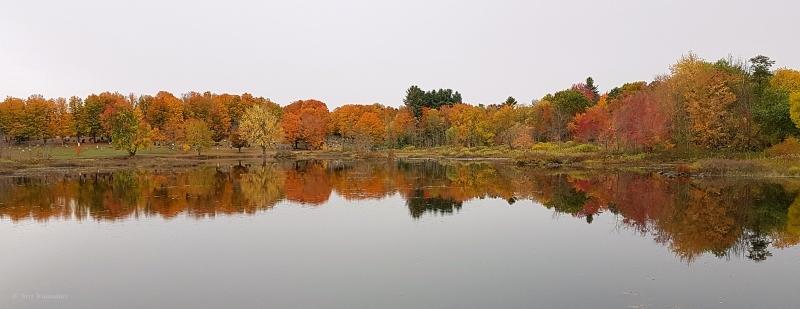
Why Autumn Pruning is Bad
When I was younger, an old-time arborist I knew used to say “The best time to prune trees is when the tools are sharp.” This guy was beset with shoulder injuries and knee problems because he also believed “What doesn’t kill you makes you stronger. Sadly, both of these old saws are dangerous lies.
Although tree-care companies have year-round expenses and need income in all seasons, a truly professional arborist knows there are two times of the year when pruning should be avoided. Late spring between bud-break and full leaf-out is one period of pruning abstinence, and the other is in the fall from the time leaves start to change colour until trees are entirely bare. There are a number of reasons to put away pruning tools at this time of year.
The Claw-Back Clause: As days get shorter, deciduous trees and shrubs start to make a waxy layer between each leaf base and the twig to which they’re attached. The wax will eventually seal the vessels that moved water and nutrients into, and sugars out of, leaves all summer. This blockage is what breaks down green chlorophyll and unmasks the yellow and orange pigments. Before the tubes are entirely blocked, though, trees “claw back” about half the nutrients from each leaf: nitrogen, iron, magnesium, manganese, and other essential elements. This is very important to the nutrient budget of woody plants.
Trees also move sugars, the product of a season’s worth of photosynthesis, from twigs and branches down to the root system for storage and later distribution. Pruning branches now will deprive trees of both nutrients and energy needed for the following year.
The Illness-Infestation Angle: All woody plants have internal defense systems that make special antifungal and antimicrobial compounds to fight infections at the site of injuries like pruning cuts. This “tree-mune response” becomes active in the early spring and is on high alert through the summer, after which it starts to shut down. Wounds made in the fall are more likely to be infected by what are called perennial cankers. Nectria and Eutypella are the two primary genera of pathogens, but there are others. In addition, the level of disease spores in the air is highest in the fall.
Even though pines and spruces only lose a small portion of their needles, the same principles hold true. Cutting evergreen branches in the summer will rob trees of a share of the nutrients and sugars they need, but it also attracts a type of moth called a pitch-mass borer to lay her eggs on fresh pruning cuts. When the eggs hatch, the grubs feed on the sap as they enlarge the wound. In the process, they trigger excess pitch production. If you’ve ever noticed unsightly, oozing pitch on the trunks of pines and spruces, that’s a result of summer pruning that invited pitch-mass borers to set up housekeeping.
The Moral Imperative: The last reason to stash the saw until trees are fully dormant is the danger of running into a self-righteous arborist who views fall pruning as a moral failure. They may give you the hairy eyeball, or worse yet, might try to make you feel guilty through “pruning shaming.” I’m not saying that I’ve ever engaged in this kind of behaviour…
Paul Hetzler has been an ISA-Certified Arborist since 1996. For shame-free consultations in the Ottawa-Gatineau region, call 613.255.4966.

